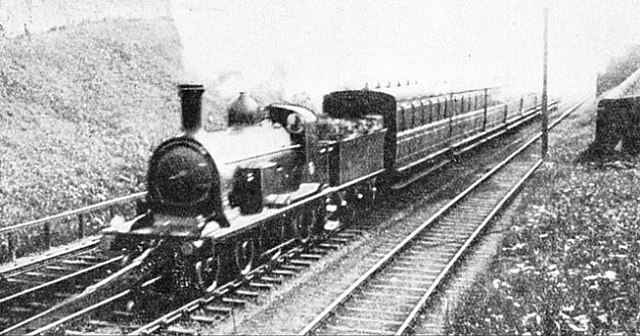Wilsontown, Morningside and Coltness Railway
The Wilsontown, Morningside and Coltness Railway was a railway opened in 1845, primarily for mineral traffic, although a passenger service was run sporadically. The line ran from a junction with the Wishaw and Coltness Railway at Chapel, to Longridge, in South Central Scotland, and it was extended to Bathgate in 1850 after takeover by the Edinburgh and Glasgow Railway. It was built to open up further coal deposits and to connect the Wilsontown Ironworks, although it did not actually reach Wilsontown. In common with the other "coal railways" with which it connected, it adopted the track gauge of 4 ft 6 in, often referred to as Scotch gauge.
Morningside W&CR station looking East; the WM&CR station is clearly visible a few hundred yards away
Edinburgh and Glasgow Railway
The Edinburgh and Glasgow Railway was authorised by act of Parliament on 4 July 1838. It was opened to passenger traffic on 21 February 1842, between its Glasgow Queen Street railway station and Haymarket railway station in Edinburgh. Construction cost £1,200,000 for 46 miles (74 km). The intermediate stations were at Corstorphine, Gogar, Ratho, Winchburgh, Linlithgow, Polmont, Falkirk, Castlecary, Croy, Kirkintilloch and Bishopbriggs. There was a ticket platform at Cowlairs. The line was extended eastwards from Haymarket to North Bridge in 1846, and a joint station for connection with the North British Railway was opened on what is now Edinburgh Waverley railway station in 1847.
A train being hauled up Cowlairs Incline


